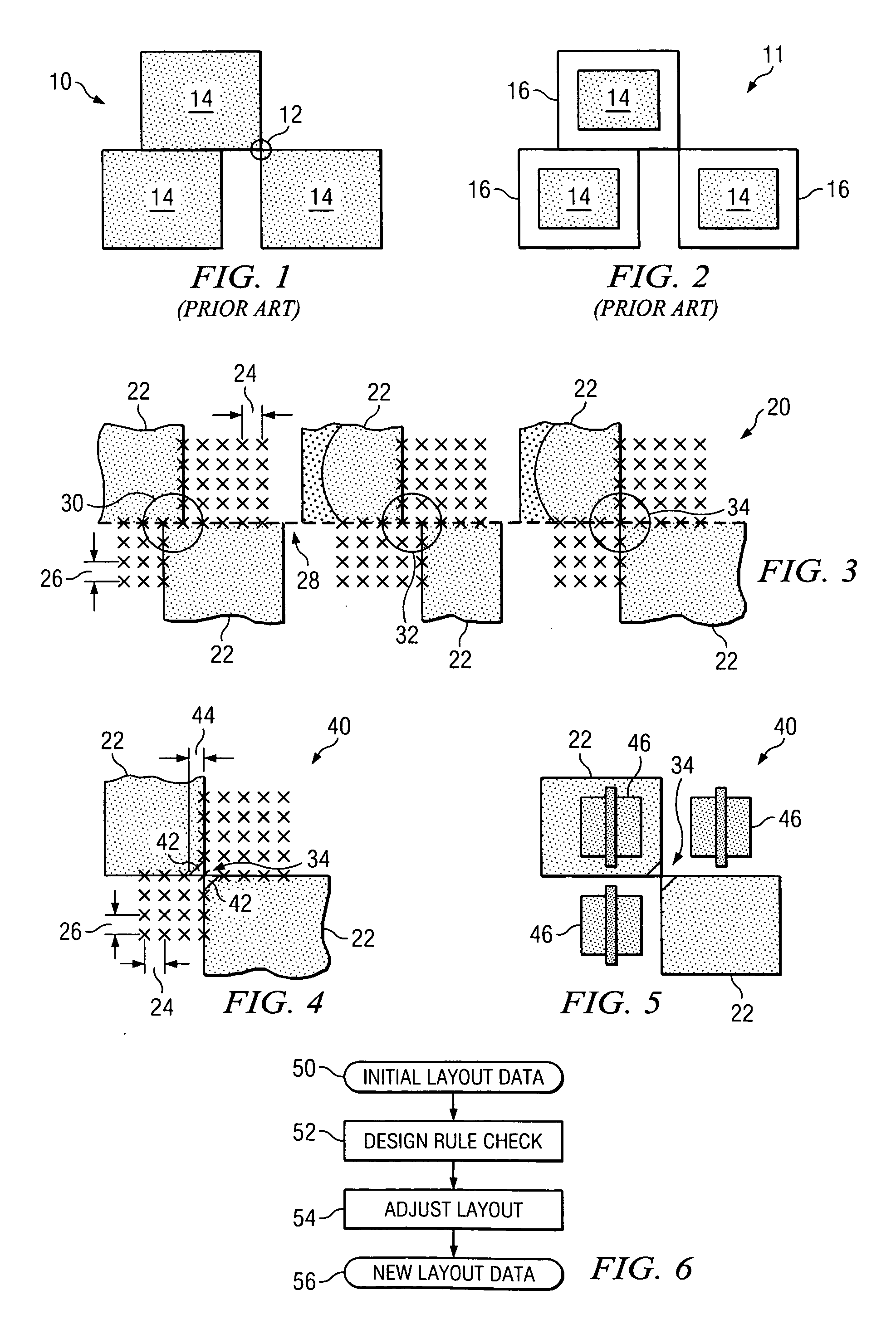Placement methods for standard cell library
a cell library and placement method technology, applied in the field of semiconductor devices and their manufacture, can solve the problems of high or low threshold voltage (vt) transistors in standard cell library inefficient use of area, manufacturing difficulties, and macros with severe placement restrictions
- Summary
- Abstract
- Description
- Claims
- Application Information
AI Technical Summary
Benefits of technology
Problems solved by technology
Method used
Image
Examples
Embodiment Construction
[0018]FIG. 3 is a schematic diagram of a layout 20 useful for the purposes of describing the invention. The layout 20 includes macros 22 containing specific circuit elements, the details of which are not material to the practice of the invention. The macros 22 are arranged in a grid pattern with (x, y) coordinates having fixed dimensions, indicated by arrows 24, 26. Typically, the macros 22 are arranged in rows, in this example adjoining at line 28, subject to design rules. It will be appreciated by those reasonably skilled in the arts that the invention may be practiced with a wide range of dimensions and design rules and that the description herein is exemplary and not exclusive. As shown at location 30, macros 22 in adjacent rows may intersect in certain instances at row boundaries 28 so long as minimum (x, y) dimensions are maintained. At location 32, it is shown that separation of macros 22 at the boundary 28 of adjacent rows is also acceptable, again, so long as suitable (x, y...
PUM
 Login to View More
Login to View More Abstract
Description
Claims
Application Information
 Login to View More
Login to View More - R&D
- Intellectual Property
- Life Sciences
- Materials
- Tech Scout
- Unparalleled Data Quality
- Higher Quality Content
- 60% Fewer Hallucinations
Browse by: Latest US Patents, China's latest patents, Technical Efficacy Thesaurus, Application Domain, Technology Topic, Popular Technical Reports.
© 2025 PatSnap. All rights reserved.Legal|Privacy policy|Modern Slavery Act Transparency Statement|Sitemap|About US| Contact US: help@patsnap.com


